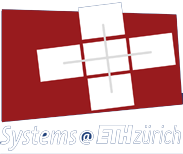Publications by Sergei Shudler
2017
Proceedings of the 22nd ACM SIGPLAN Symposium on Principles and Practice of Parallel Programming, Austin, TX, USA, February 2017
Task-based programming offers an elegant way to express units of computation and the dependencies among them, making it easier to distribute the computational load evenly across multiple cores. However, this separation of problem decomposition and parallelism requires a sufficiently large input problem to achieve satisfactory efficiency on a given number of cores. Unfortunately, finding a good match between input size and core count usually requires significant experimentation, which is expensive and sometimes even impractical. In this paper, we propose an automated empirical method for finding the isoefficiency function of a task-based program, binding efficiency, core count, and the input size in one analytical expression. This allows the latter two to be adjusted according to given (realistic) efficiency objectives. Moreover, we not only find (i) the actual isoefficiency function but also (ii) the function one would yield if the program execution was free of resource contention and (iii) an upper bound that could only be reached if the program was able to maintain its average parallelism throughout its execution. The difference between the three helps to explain low efficiency, and in particular, it helps to differentiate between resource contention and structural conflicts related to task dependencies or scheduling. The insights gained can be used to co-design programs and shared system resources.
@inproceedings{abc,
abstract = {Task-based programming offers an elegant way to express units of computation and the dependencies among them, making it easier to distribute the computational load evenly across multiple cores. However, this separation of problem decomposition and parallelism requires a sufficiently large input problem to achieve satisfactory efficiency on a given number of cores. Unfortunately, finding a good match between input size and core count usually requires significant experimentation, which is expensive and sometimes even impractical. In this paper, we propose an automated empirical method for finding the isoefficiency function of a task-based program, binding efficiency, core count, and the input size in one analytical expression. This allows the latter two to be adjusted according to given (realistic) efficiency objectives. Moreover, we not only find (i) the actual isoefficiency function but also (ii) the function one would yield if the program execution was free of resource contention and (iii) an upper bound that could only be reached if the program was able to maintain its average parallelism throughout its execution. The difference between the three helps to explain low efficiency, and in particular, it helps to differentiate between resource contention and structural conflicts related to task dependencies or scheduling. The insights gained can be used to co-design programs and shared system resources.},
author = {Sergei Shudler and Alexandru Calotoiu and Torsten Hoefler and Felix Wolf},
booktitle = {Proceedings of the 22nd ACM SIGPLAN Symposium on Principles and Practice of Parallel Programming},
title = {Isoefficiency in Practice: Configuring and Understanding the Performance of Task-based Applications},
venue = {Austin, TX, USA},
year = {2017}
}
2015
Proceedings of the 29th ACM on International Conference on Supercomputing, ICS'15, Newport Beach/Irvine, CA, USA, June 2015
@inproceedings{abc,
author = {Sergei Shudler and Alexandru Calotoiu and Torsten Hoefler and Alexandre Strube and Felix Wolf},
booktitle = {Proceedings of the 29th ACM on International Conference on Supercomputing, ICS{\textquoteright}15, Newport Beach/Irvine, CA, USA},
title = {Exascaling Your Library: Will Your Implementation Meet Your Expectations?},
url = {http://doi.acm.org/10.1145/2751205.2751216},
year = {2015}
}

